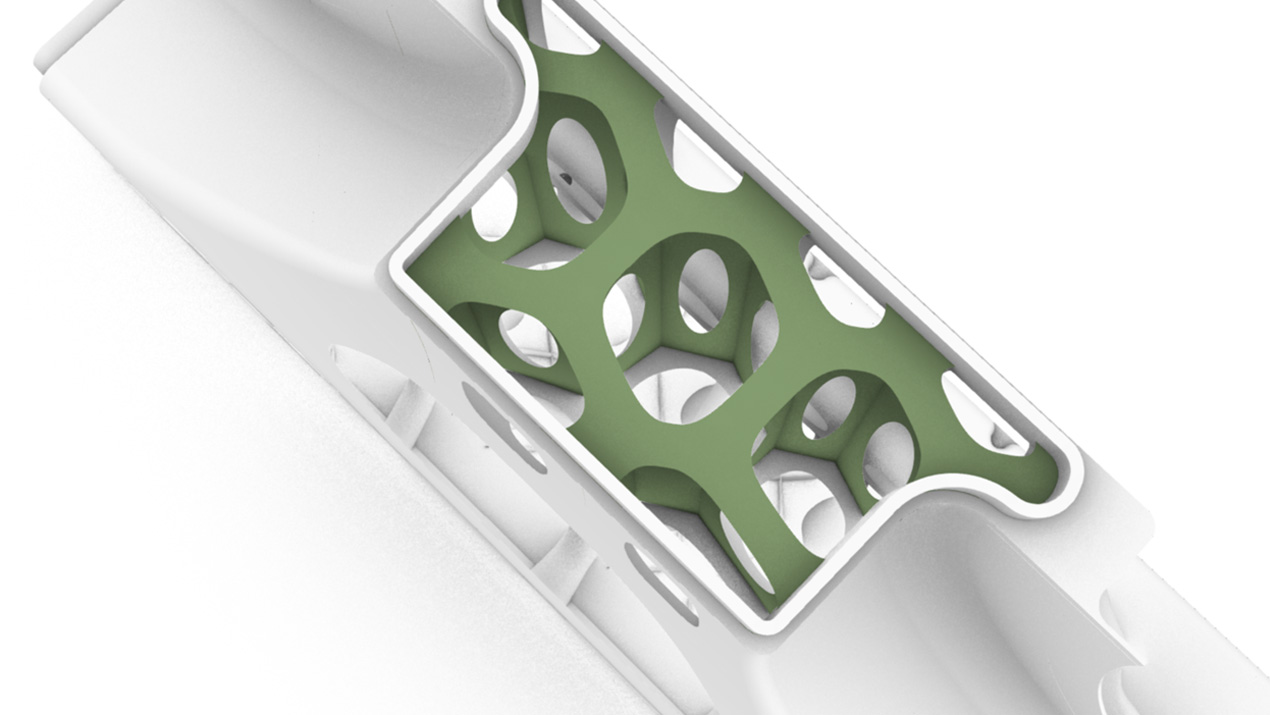Achieve industrial-scale DfAM readiness with Synera
Process automation for additive manufacturing
Synera changes the way engineers approach Design for Additive Manufacturing (DfAM) by automating workflows, seamlessly connecting diverse software tools, easily integrating into existing workflows, and enhancing design and production processes.

Our software is trusted by engineers at
Navigating the complex terrain of additive manufacturing automation
Design for Additive Manufacturing (DfAM) presents unique challenges that traditional manufacturing processes don't face. DfAM demands a nuanced understanding of both design intricacies and the capabilities of additive manufacturing technologies, like Selective Laser Sintering (SLS) and Laser Powder Bed Fusion (LPBF).

Complex design adaptation
Conventional designs often do not translate well to additive manufacturing and require significant modifications for optimal production. Synera offers features such as cooling channels or triply periodic minimal surfaces (TPMS), which are crucial for manufacturability.

Efficiency in serial production
When designing parts for mass production, the balance between sophisticated design and economic feasibility becomes a critical trade-off. Synera enables designs where every element is carefully optimized for manufacturability and cost efficiency.

Optimized buildjob preparation
Synera enables the precise definition of process parameters and nesting for Selective Laser Sintering (SLS) and similar technologies, enabling efficient use of material and time, impacting the overall sustainability and cost of the project.

Integration of various software tools
The variety of software tools used in DfAM, each with its own API and language, complicates the process. Synera enables easy and seamless integration of these tools for an optimized workflow.
Advantages of Synera in overcoming DfAM challenges

Automated workflow efficiency
Synera eliminates repetitive manual tasks in additive manufacturing through its automation workflows. This approach ensures that processes like adapting existing parts for AM, serial part design, and buildjob preparation are executed flawlessly, enhancing efficiency and reducing the risk of human error. The result is a significant boost in productivity, allowing engineers to concentrate on innovation and design excellence.
Unified software integration
With Synera, the challenge of integrating diverse CAD, CAE, CAM and PLM tools disappears. Our platform offers connectivity across various software tools, including leading solutions and specialized DfAM tools. This unified ecosystem helps engineers make the right choice in AM with ease, fostering a more cohesive and efficient design and manufacturing process.

Advanced design capabilities for AM
Synera excels in transforming traditional CAD designs into additive manufacturing masterpieces. Our platform integrates advanced DfAM tools like voxel, polynurbs, implicit modeling and generative design, allowing engineers to create designs that are not just adapted but fundamentally built for additive manufacturing processes like SLS and LPBF. This integrated approach ensures that designs are optimized for manufacturability, sustainability, and cost, paving the way for groundbreaking innovations in additive manufacturing.
Be part of the innovation and try Synera now!
From concept to achievement: Dive into our case studies for in-depth project stories
See what you can automate with Synera

Algorithm-based FEA

Automated Routing

Bionic Lightweight Design

Designspace Exploration (DoE)
Designspace Exploration (DoE)
Extensive Marketplace and ready to use integrations

Discover our Process Automation whitepaper
Dive deeper into Agile Hardware Development with Visual Programming. Explore engineering automation challenges, benefits, history, and streamlined collaboration.

































